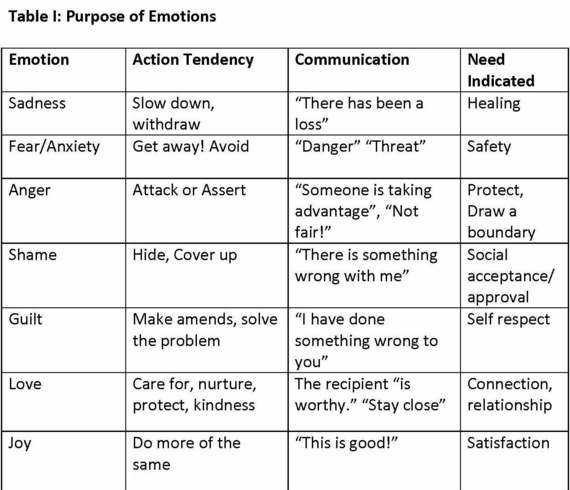
By Heidi Rogers, Psychotherapist and counsellor
We all feel emotion. It’s part of what makes us human.
Anger, sadness, fear, happiness and love are all emotions that almost every human has felt at some time of their lives.
But what are emotions, how do they differ from feelings, and why are they important?
Understanding the difference between emotions and feelings
While feelings and emotions are two sides of the same coin, they are distinctly different.
Understanding this can help you change unhealthy behaviours and find more happiness and peace in your life.
Dr.Sarah Mckay, neuroscientist and author of the Your Brain Health blog describes it in this way: “Emotions play out in the theatre of the body. Feelings play out in the theatre of the mind.”
- Emotions like fear, hatred and love trigger physical sensations in your body.
- Feelings represent the mental experiences of your emotions, which your mind assigns meaning.
While emotions are temporary, the feelings they evoke may endure and accumulate over a lifetime.
It can be a perpetual cycle if no action is taken. Emotions cause unconscious feelings, which trigger new emotions that go on to produce more negative feelings… It can be quite exhausting!
Feelings are subjective
While basic emotions are instinctual and universal to us all, the significance they take on are shaped by an individual’s personality and experiences, which obviously fluctuates between individuals
It’s important to understand how emotions and feelings function within us because they play a key role in how we engage with others, and they are a powerful influence behind many of your actions (helpful and unhelpful).
This understanding is the key to change because many of us react to our emotions and feelings based on out-dated, fear-based perceptions.
When you become more self-aware, and can begin to identify your emotions and feelings, you can determine their origin, acknowledge their presence, and then take control back in navigating your life. Increasing our understanding of our emotions is the key to taking back the power over how we feel. We can then begin to consciously change our lives and behaviour, because we turn off ‘auto pilot’ and increase our sense of autonomy and purpose.
“Good” vs. “bad” emotions, and their purpose
We’re taught from a young age to think that painful, “negative” emotions like sadness, fear, anger or shame should be avoided, numbed, and removed from our consciousness. “Positive” emotions like happiness and love are encouraged and praised. How many times have we heard our parents, other parents or ourselves say something like “go to your room until you have changed your attitude and can be nice to everyone.” Or often I hear parents saying “stop crying”  or “you don’t need to cry about this, ok?” to their children. The uncomfortable emotions we feel are sometimes uncomfortable for those around us too, and so they try to settle their own feelings of agitation by telling others to contain their negative feelings.
or “you don’t need to cry about this, ok?” to their children. The uncomfortable emotions we feel are sometimes uncomfortable for those around us too, and so they try to settle their own feelings of agitation by telling others to contain their negative feelings.
Evolutionary, it makes sense, right? Human beings gravitate towards pleasure and things that bring us joy, and we avoid and detest when we feel uncomfortable or experience pain. Emotions are a textbook example of this and I often hear clients say, “ugh! I hate feeling this way!”
The tricky bit is that when we avoid the negative emotions, or try to numb them, that is when we disconnect from their inherent purpose and miss the value that they can bring us.
Emotions exist because they serve the vital function of attaching ourselves to what really matters and what we deem internally valuable. Belonging and safety are two of the main feelings that humans are hardwired to require for survival. Research has shown us that our emotions are what helped our ancestors communicate their needs, and therefore were vital for survival.
Our emotions are hardwired into our bodies and are the quickest method to connect with others and ourselves. Smiling or crying evokes universal responses, despite language barriers or cultural differences.
Why do we have emotions?
The role of emotion is similar to many other purposes within our bodies: for survival. It is emotions that kick off our responses and reactions to things, and can enable t body to take action if required. Our emotions may not always be logical, but to our primitive brains, it’s all about survival –at any costs – and so pursuing safety is always our brain’s #1 agenda.
For example, if you are walking down a busy city street, and see something suddenly slither across the ground, your brain will respond with the emotion of fear, which will cause you to jump away. Logically, we know that it is unlikely to see a snake on a busy city street, but your emotions and brain will jump into gear, bypass all rational thought, just to keep you safe. When you look closer, you realize it is just a paper bag, and your emotions may turn to happiness at the relief, or maybe even embarrassment that you jumped 3 feet away to avoid the deadly paper bag!
Think about those startling experiences we all have had: a close call near accident, a loud noise, or aggressive behaviour from another person.
What happened within your body?
Your body would have bypassed any sort of ‘thinking’ and would have gone on auto-pilot, with your heart rate increasing, quickness of breath, sweating, or muscles tensing. All of this is designed by your brain in order to activate your ability to protect yourself. Most commonly known as the ‘fight, flight, freeze’ response, our bodies are guided by our emotions for what action to take. The emotion of anger can make our brain think we are under attack, sadness communicates loss, and feeling love or showing love makes our body feel safe.
Emotions spur external communication
The secondary role of emotions is to let others know how we are feeling and how that impacts group safety. Facial expressions and body language can speak volumes, across race, religion, culture and dialect. Our prehistoric ancestors needed ways to communicate “careful! We are in danger of being attacked!” by looking afraid or shaking. Or by smiling and communicating “things are good! We are safe.”
Emotions encourage inflection
 Finally, emotions serve a valuable purpose in self-communication, and in helping us discern our values and goals. Our emotions can tell us what we need, or what is unhelpful. Knowing those things can help guide our life and alter our choices.
Finally, emotions serve a valuable purpose in self-communication, and in helping us discern our values and goals. Our emotions can tell us what we need, or what is unhelpful. Knowing those things can help guide our life and alter our choices.
By avoiding our emotions, or numbing them, we prevent ourselves from accessing valuable information on what we need. And if we are unclear about what we need, it is harder to make decisions. Learning to listen to what our emotions are trying to tell us (as in the table above) can help guide us towards what’s important in our lives.
The old adage, ‘what we resist, persists’ rings true in this regard. Resisting, rejecting or judging our emotions is unhelpful and usually futile. We may be able to ignore or avoid our emotions for a period of time, but eventually they creep in and find a way to be heard.
It is easier to accept them, acknowledge them, and give them permission to be present. Exercising self-compassion and empathy towards ourselves is much more effective in accomplishing change or personal growth. Practicing mindfulness, and naming the emotions can be helpful in recognising what we are feeling.
“The way that guy just spoke to me is making me feel really angry. It’s interesting that I am interpreting his words in a way that makes me feel anger.” But beyond that, get curious. Ask yourself “why is this making me angry? What is that about? I wonder what his words are triggering within me?”
We have the ability to change ourselves and create the lives we want. By getting curious about your emotions, and learning how to understand them, long-lasting change is possible. Research has shown us that neuroplasticity (the brain’s ability to alter functions after repetitive changes to thoughts and behaviours) is powerful and can lead to remarkable changes. Learning about our emotions is the first step to establishing control of our lives.

